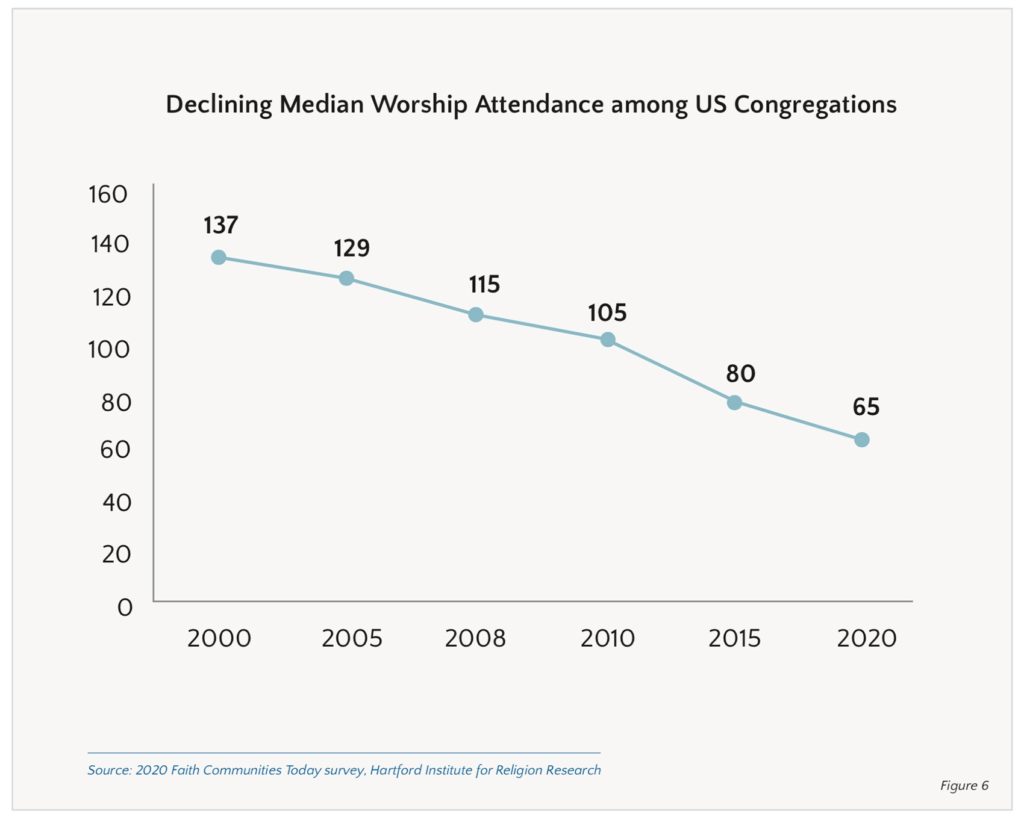
As you know, it’s been a tough time to lead in the church over the last few years.
What makes it even harder, though, is if you’re leading with a set of false assumptions about the future.
False assumptions are challenging enough in life. Thinking a hike in the woods is going to be easy, and then discovering it’s really difficult and takes you three times as long as you forecasted can create more than a few challenges, not the least of which is that you end up feeling discouraged.
It’s better to know it will be difficult and find it a bit easier than it is to think things will be easy and find them super challenging.
What’s true in life is especially true in leadership.
And that said, I keep hearing and seeing more than a few church leaders working off a set of assumptions that, in all likelihood, aren’t going to pan out.
If you get your assumptions right as a church leader, the future should be a lot easier than if you get them wrong.
If you get your assumptions right as a church leader, the future should be a lot easier than if you get them wrong. Click To Tweet1. What worked before is going to work again
Crisis is both a revealer and an accelerator.
The crisis of the last few years has done two things for every church and business. It’s revealed what’s working and what isn’t. And it’s sped up the consequences of both.
While a few churches have seen rapid growth during the crisis, most churches still hover between 30-70% of their 2019 attendance.
A survey of over 15,000 churches conducted just before COVID hit shows that between 2000 and 2020, median church service attendance dropped from 137 people to 65.

The updated graph will probably show an even more precipitous decline.
So what’s the insight?
Because crisis both reveals and accelerates, perhaps you’re seeing today what your church would have looked like in 2030. The longer your church has been fully open for in-person services, the more true that is.
As sobering as that might be, perhaps it’s a gift.
If the old approach hasn’t been working for 20 years, the accelerated decline can be a gift to help you see that a new approach is needed.
If the old approach never led to renewal, trying harder won’t bring about different results no matter how hard you try.
And if the old model of church wasn’t working before, it’s probably not going to work again, no matter how sincere you are, how loudly you shout it, or how desperate you feel.
Perhaps the time has finally come for church leaders to double down on the mission and experiment with the method.
If the old model of church wasn't really working before, it's probably not going to work again, no matter how sincere you are, how loudly you shout it, or how desperate you feel. Click To Tweet2. The building will be the center of ministry
At the heart of the broken approach to church is our reliance on buildings as the focal point of all ministry.
What if the church has left the building? What if it’s actually that deep?
And by left the building, I don’t mean that the church has abandoned gathering. In the future, gathering might be more decentralized, more small-group-based, and more distributed.
Somehow, somewhere, the church fell into the assumption for the church to meet, it has to be in a building owned or leased by the church.
And that usually means seating people in rows, not circles, where dialogue isn’t really encouraged.
As your church reopened after COVID, you’re still both shocked and frustrated by the surprisingly low return-to-church attendance trends in your facility.
What if the people you’re missing haven’t left your church? What if they’ve just left your building? (Here’s more on why people aren’t coming back to church.)
Please hear what I’m saying: some former churchgoers are gone for good. No question.
But most Christians who are not returning to church are not leaving Christianity. They may not even be leaving your church.
They’re just not coming back to the building, and perhaps they won’t even after the pandemic is a distant memory.
I’m not saying this is good (I don’t like it either). I am saying it’s, in all likelihood, real. Leaders who cooperate with reality tend to do far better than those who compete with it.
Here’s what’s critical. The mission isn’t dead. But the methods might be.
What if the building as a method is getting in the way of the church as a mission?
Most Christians who are not returning to church are not leaving Christianity. They may not even be leaving your church. They’re just not coming back to the building. Click To Tweet3. You don’t need to take online ministry that seriously
The rallying cry of “everybody get back to the building” that so many pastors have shouted over the last year or more still surprises me.
Accompanying that is a consistent dismissal that online is an essential component to ministry—that a website, live stream, and social media presence is enough. And that it’s just fine to underfund all three and relegate them to the middle of someone’s job description.
Too many churches have a Web1 presence as Web2 peaks, and Web3 emerges, yet still wonder why they can’t reach people.
(For a primer on Web3 and the “metaverse,” I highly recommend listening to this conversation I had with Meta/Facebook’s Nona Jones and VR Church’s D.J. Soto).
Too many churches have a Web1 presence as Web2 peaks and Web3 emerges, yet still wonder why they can't reach people. Click To TweetMost churches still spend between 90-99% of their budget on in-person ministry in an era where fewer people show up for in-person ministry than ever.
Please hear me: I think you need to do in-person ministry exceptionally well.
But to spend a tiny fraction of your time and resources online connecting with people, starting conversations, and disciplining them is a significant missed opportunity.
Sometimes online conversations and ministries will lead to in-person conversations. Sometimes they won’t.
But the point is everyone you want to reach is online. If you miss the Internet, you miss them and all the opportunity that comes with it.
But the point is everyone you want to reach is online. If you miss the Internet, you miss them, and all the opportunity that comes with it. Click To Tweet4. The future will be linear
There was a season in leadership from the 1980s through the mid-2010s where leadership was more straightforward because progress (in both technology and society) was linear.
There were a few recessions and setbacks along the way, but it was usually only a matter of time until things started moving forward again. While that wasn’t true in every organization, it was culturally true.
The mid-2010s ushered in the first waves of instability (division, deeper partisanship, rage, and the serious questioning of institutions and disrupting the patterns we knew and had come to trust).
The pandemic and ensuing global crisis accelerated the destabilization even further.
Many experts predict the future will be unpredictable (how’s that for a prediction?). The future will be less linear, more unstable, and more complex beyond anything we’ve led through.
(Mark Sayers has some profound insights on “disruption as the new normal” here.)
Thinking the future will be linear and predictable only sets you up for more heartbreak and anger.
You know the old joke – the secret to happiness is low expectations.
Having lower expectations for the future and embracing the probability of instability will better prepare you to lead.
Agile leaders and organizations thrive in periods of rapid change, and if you’re ready for it, you can be one of those leaders and one of those congregations.
For more on how to prepare for a non-linear future, read this.
Thinking the future will be linear and predictable only sets you up for more heartbreak and anger. You know the old joke - the secret to happiness is low expectations. Click To Tweet5. Running really hard is the only way to fix this
So many leaders have been running so hard for so long, grinding under the false hope that the next vacation/new season/new year will bring new hope.
Guess what? It hasn’t. And it won’t.
Which leaves you with the gaping question: how long can you run at this pace?
For most leaders, the meter expired months or years ago. And that leaves you exhausted, looking ahead at an impossible future.
Exhaustion is the gateway drug to terrible decision-making, moral failure, burnout, ineffectiveness, and honestly, more of the same. Why? Well, running at an unsustainable pace will leave you too tired to think about innovation and without the energy to dare, risk, or execute.
This has to be the moment for you to slow down—to find a sustainable pace.
It’s no shock that one of the first casualties of working too hard is a loss of creativity. As Adam Grant has pointed out, great ideas take time and margin to develop and often involve experimentation and failure.
And most importantly, creativity is linked to slowing down and creating space for the creative process to ferment and grow (Adam’s 2016 TED talk would be good therapy right now, by the way).
If finding a sustainable pace has been elusive for you (as it has for most leaders), I’d love to help you find one.
Running hard indefinitely isn’t the way to fix a problem—it’s actually the way to break you.
Running hard indefinitely isn't the way to fix a problem—it's actually the way to break you. Click To Tweet